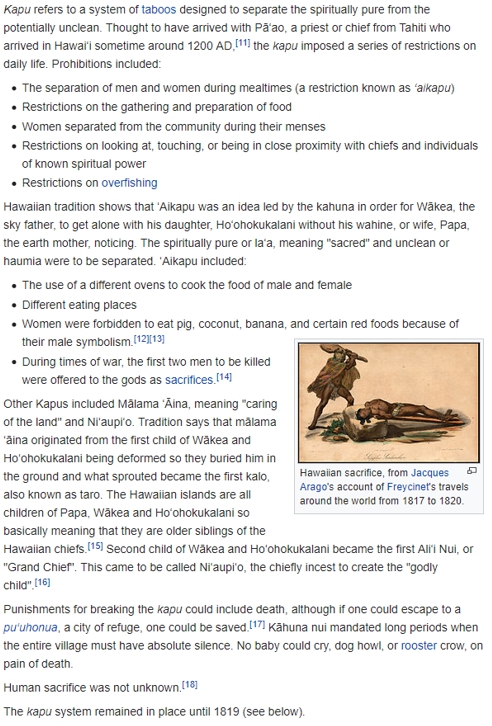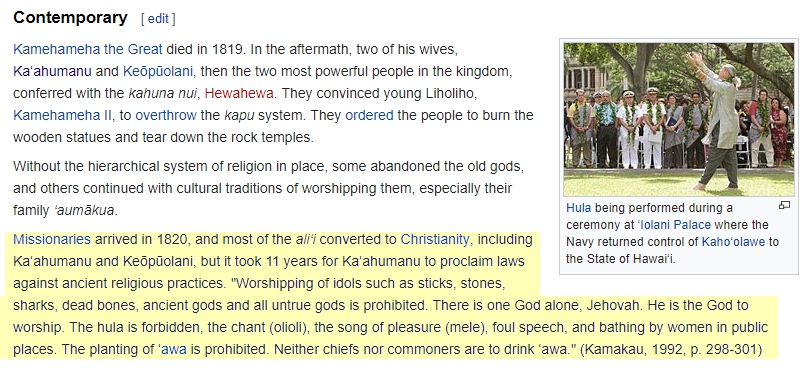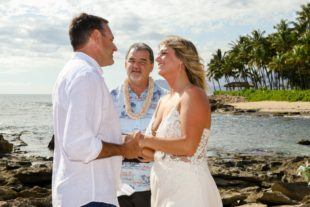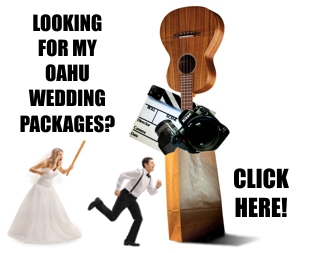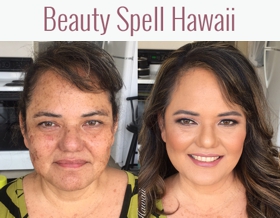THE HAWAIIAN WEDDING CEREMONY
Before I dive into the belly of this article, I want to get the business part out right away.
I would estimate that about 90% of my customers want some type of Hawaiian element in their wedding.
Some of those elements are as follows:
- A Hawaiian Prayer – a blessing in the Hawaiian language
- He Alo a He Alo – These are when couples touch noses and heads together and share their first breath together as a couple
- Conch Shell Blowing – either to signify the beginning or end of a ceremony, traditionally it was a call to wake up the dead.
These are seamlessly integrated, upon request, into ceremonies. As of now in 2019, there’s no extra charge for Hawaiian Ceremony, but I’m not sure what the future may hold. It’s getting more and more expensive to live in Hawaii and our ministers may need to charge more. So if that happens, the price will, of course, go up. But right now, it’s $175 for my ministers, and the Hawaiian part is no charge.
Now, for the belly of this article, which is all about Hawaiian Traditions.
When tourists and many locals think of Hawaii, the term “Aloha Spirit” comes up quite often. To sum it up, Aloha spirit is our island’s version of Southern Hospitality. Everyone is pretty chill here and friendly. But was Hawaii always a great place, filled with nice locals?
Not at all.
In fact, if you travel back in time to the days of our most popular King, Kamehameha the First, you will find a Hawaii that was a ruthless and downright violent place to live.
In our modern era, Kapu means “Keep Out” and you will find “Kapu” signs plastered all around Costco, telling customers where they can’t go. But back in the ancient times, Kapu was a code of conduct for the Hawaiian people, and it literally separated the “haves” from the “have nots.” If you were a commoner, you could not look at a high government official in the eye, touch him, or even stand in his shadow. Doing so, even by accident, would result in death. Women were not allowed to eat with men, or allowed to handle pork, bananas, or coconuts. If they did, they would be put to death.
There were hundreds of rules in the Kapu system that common Hawaiians had to abide by, and violating any one of those would result in death.
If that doesn’t scare you, maybe this well.
The government of Hawaii, which was a strong ruled monarch didn’t show much Aloha. King Kamehameha the First, the guy whose statue you can find in Waikiki was a strong dictator. Actually, ruthless. He united the Islands mostly through violence, conquering independent governments one by one, much through bloodshed. Historians call it “uniting,” let’s call it what it was, a successful coup. There was a scene in the movie 300 where King Leonidas drove an opposing army off of a cliff. Well, King Kamehameha actually did that here at the Pali. 800 Hawaiian warriors fell to their death the famous “Battle of Nu’uanu.” Learn more about that here
As for an interesting note on our first King, he had a taste for young women. Historians are unsure of how many official wives King Kamehameha took, but there’s at least eleven that I counted. Many of whom were underaged, according to the modern standards of consensual age. His favorite wife, Queen Ka’ahumanu was around ten years old when she married King Kamehameha.
After King Kamehameha died, his favorite wife, Queen Ka’ahumanu became the most powerful ruler in Hawaii. She became a strong Christian and abolished the Kapu system. Women could now dine with men and handle forbidden food. This also meant areas of the islands that were once considered off-limits, were no longer prohibited.
In her strongest move, the Queen eventually made the Hawaiian religion illegal. Even the practice of Hula was outlawed, as she believed there was only one God, and Hula worshiped multiple gods (which it did). From this time and on, King Kamehameha the First and on, most Hawaiians became protestant Christian.
This is where things get rather interesting when it comes to a Hawaiian Wedding Ceremony. Technically, a simple Christian Ceremony is a true Hawaiian Wedding ceremony.
If you want to go back to the King Kamehameha Days, those wedding ceremonies didn’t consist of vows, rings, or hula performances. Many marriages were not a result of a ceremony or legal contract.
So when a client requests a non-Christian Traditional Hawaiian ceremony, well – it really didn’t exist.
Or when a client of ours required a non-religious traditional Hawaiian ceremony – well, that didn’t make sense either as all the chants, all the Hawaiian prayers, even if there was hula involved, all were religious.
Theoretically, even the Hawaiian ceremony that my company performs would be illegal under Queen Ka’ahumanu because it mixed Hawaiian traditions with Christian values. But we’re living in modern times, aren’t we?
I’m not sure when “Aloha Spirit” finally became the adopted slogan here in Hawaii, or even a practice. I can tell you that people here are nice. I traveled the world and we have some of the most friendly people here. But – and there’s a big “but” here, people used to be a lot more friendly. I think that back in the 90s, Aloha Spirit peaked and things have definitely changed. People here are getting a lot ruder, a lot more impatient, and they are getting angrier. Or maybe, we’re just reverting to our really really old ancient ways – haha.
My personal opinion? I have a feeling that many locals are buying into that victim mentality that is plaguing our nation, where they feel that our sovereignty was stolen from us. Many want us to go back to the monarch days.
Really?
Where hula and Hawaiian theology was illegal?
Or did they want to go back even further to the days where Kapu was the law of the land?
Many don’t want to hear the truth, but it was the United States that gave locals their freedom of religion and peace. Their Queen took those liberties away. And their first King made living for anyone who wasn’t royalty or “special,” quite scary.
Well, that’s enough for you to chew on.

